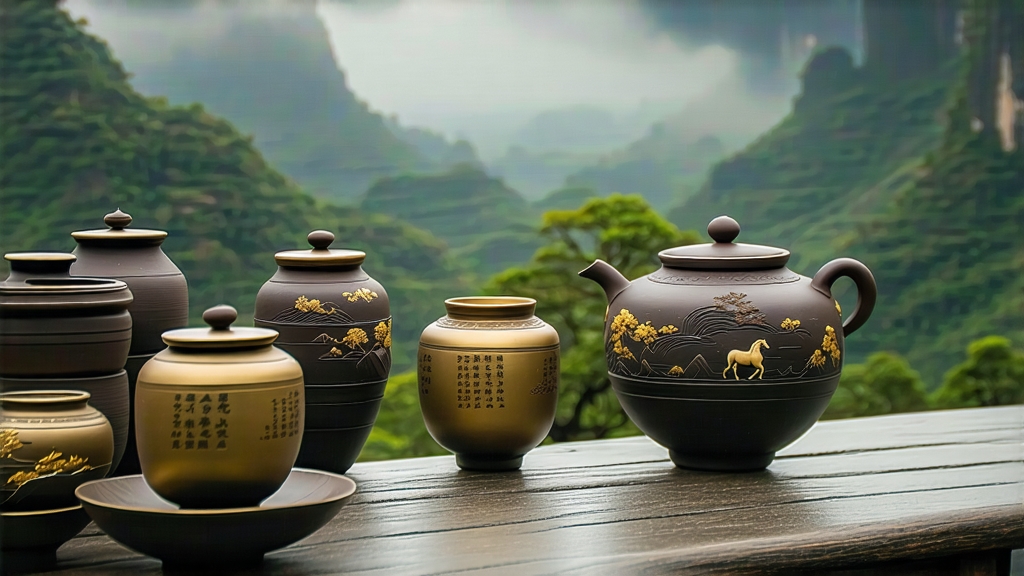
Tucked away in the humid, karst-pocked southwest of China, the small town of Liubao has been quietly fermenting history for more than 1,500 years. To most outsiders “dark tea” (heicha) is synonymous with Yunnan’s pu-erh, yet connoisseurs inside China reserve a special reverence for Liubao—an leaf that once greased the wheels of the ancient Tea Horse Road and still carries the scent of camphor, betel nut and damp cellar within every twisted strand.
-
From Ming Militaria to Modern Mug
The first written record appears in 1585, when the Ming military requisitioned “Liubao tea from Cangwu” as a disinfectant and thirst-quencher for frontier troops. Compressed into tight bamboo-leaf bundles, the tea survived the malarial lowlands of Guangxi and the torrid march into Yunnan. By the Qing dynasty it had become tribute, arriving in Beijing via the Xunjiang River and the Grand Canal. Caravans heading for Tibet swapped horses for bricks of Liubao, valuing its ability to aid digestion of butter-rich tsampa and to counteract altitude sickness. When the British opened Hong Kong’s tea auctions in the nineteenth century, Liubao was catalogued as “Liu-Pao—medicinal, smoky, keeps in any climate,” and shiploads disappeared into the holds of clippers bound for Southeast Asia where it became a breakfast staple in kopitiams from Penang to Medan. -
One Leaf, Three Faces
Although all Liubao is made from the large-leaf Camellia sinensis var. assamica indigenous to Guangxi, merchants classify it into three market styles:- San Cha (loose): the quickest to age, favoured by local miners who need a tea that can be boiled all day on a charcoal brazier.
- Basket Tea (lan cha): 30–50 kg nests packed inside woven bamboo, still the dominant export shape; the bamboo imparts a faint green-grass note that melds with the earthiness.
- Brick / Cake (zhuan / bing): compressed under hydraulic presses for collectors; slower aging, higher investment value.
-
The Craft: Where Sun, Steam and Microbes Dance
Harvest runs from April to October, but the sweet spot is the rainy-season flush of May when leaves grow broad and mineral-rich. After plucking, the leaf is carried to the village’s open-air withering court where mountain mist reduces moisture to 65 % within three hours. A 500-year-old dragon-eye wood roller then bruises the leaf just enough to rupture cell walls without macerating them, initiating oxidation. The critical step is “dui wo” (wet-piling), Guangxi’s answer to shou-pu-erh: the leaf is steamed, piled 70 cm deep under jute tarpaulins, and misted with Liubao’s mineral spring water. Internal temperature climbs to 58 °C within 36 hours; thermophilic microbes—Bacillus subtilis, Aspergillus niger, Blastobotrys adeninivorans—proliferate, breaking down catechins into theaflavins and gallic acid that give Liubao its trademark amber-red cup and sweet, camphor finish. The pile is turned every seven days; after 35–50 days the leaf is dark chocolate brown, smelling of wet bark and dried longan. Final low-temperature roasting over lychee wood halts microbial activity, while a month of resting in bamboo baskets allows off-odors to dissipate. -
Compression & Cave Storage
Unlike pu-erh, Liubao is traditionally aged in limestone caves whose relative humidity hovers at 85 %. Over decades the tea absorbs minerals leaching from the karst, developing a slippery, jade-like mouthfeel. A 1970s basket recently opened in the state warehouse of Wuzhou revealed leaves glistening with golden “tea cream” (a precipitate of polysaccharides and theabrownins) and a fragrance compared by cuppers to 1962 Château d’Yquem. -
Brewing: The Miner’s Kettle to the Gongfu Tray
Liubao forgives mistakes; it is the dark tea most tolerant of hard water and over-steeping. Yet to unlock its full opera of flavours, use 5 g per 100 ml in a porcelain gaiwan or 7 g in a 150 ml Yixing zi-sha